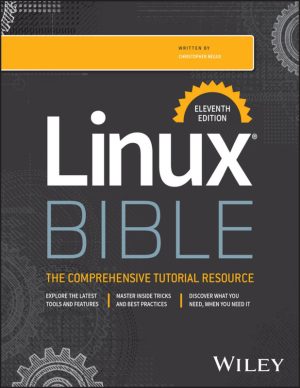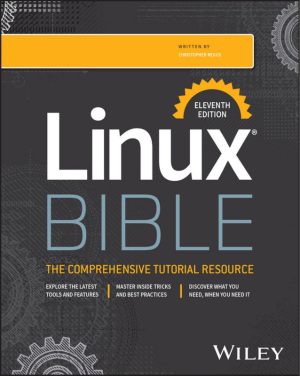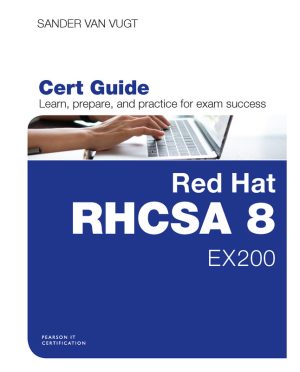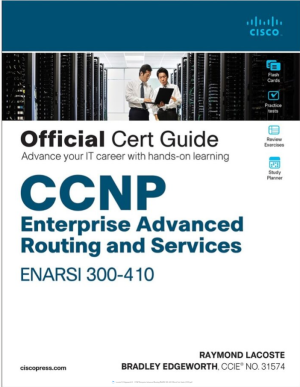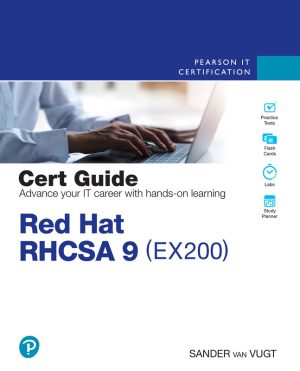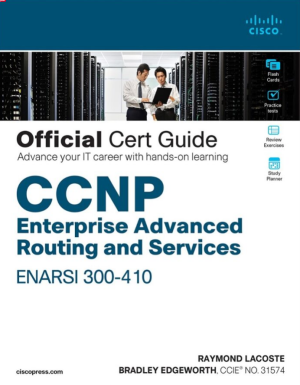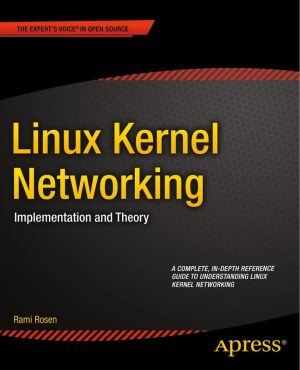Description
BRAND: Expert TRAINING | ENGLISH | INSTANT DOWNLOAD
Linux Networking – Basics and Beyond 2024
“Linux Networking Basics and Beyond 2024 Expert Training”
Linux Networking Course – Basics and Beyond. With over 10 hours of content, this video course teaches you how Linux systems communicate and network in real-world environments. Given that most servers in networks and the cloud today use some form of Linux, the course “Linux Networking – Beyond the Basics” focuses on the use of Linux as a server. In order to communicate between these servers, both physical and virtual, there is a need to network them. With more than 8 hours of in-depth training and hands-on demonstrations, this course will teach you the key concepts of network configuration on various Linux server distributions to gain the skills you need to succeed in your career.
What you will learn:
- Getting Started and Networking: In the initial system setup section, suggestions are provided, systems are prepared, and how to work with the terminal and text editors is taught. It also covers networking concepts including the basics of computer networks, the TCP/IP protocol, the OSI model, and more.
- Network Services: In this section, you’ll learn about the actual network services used in various Linux distributions, including Networkd and NetPlan in Ubuntu and NetworkManager in Fedora, RHEL, and CentOS.
- Commands and Configurations: We will spend a lot of time learning important commands such as ip, ping, dig and nmcli along with hostname and DNS.
- Connecting between hosts with the command line: You will be introduced to tools such as SSH, SFTP, rsync, SMB and other network tools and services such as wget and curl to communicate between systems.
This course is suitable for people who:
- They have basic knowledge about downloading and installing Debian (as a server) on a virtual machine.
- Know how to set up a virtualization platform like VirtualBox (or any similar program).
- Have worked with a Linux text editor such as vim or nano (the instructor will focus on vim).
- They have a virtualization platform of their choice, such as VirtualBox or VMware Workstation, etc. It is recommended to use NAT mode instead of bridged mode. If you are using VirtualBox, create and select the “NAT network” option to connect your virtual machines network.
- Download and install on the virtual machines at least the following Linux operating systems: Debian (as a server, without a desktop environment) and at least one Linux client with an environment (Debian, Ubuntu Desktop, Fedora Workstation, etc.). These operating systems must be able to communicate with each other and connect to the Internet.
- For more information on how to set up your virtual environment and Linux systems, visit https://prowse.tech/webinars.
Course headings
- Introduction
- Linux Networking – Basics and Beyond: Introduction
- Module 1: Setup and Networking 101
- Module introduction
- Lesson 1: System Setup
- Learning objectives
- 1.1 Recommended Lab Setup
- 1.2 Potential Virtualization Systems
- 1.3 Configuring Linux Virtual Machines
- 1.4 Configuring NAT
- 1.5 Using SSH
- 1.6 Working with the Terminal
- 1.7 Basic Linux Commands
- 1.8 Using Text Editors
- 1.9 Using VSCode
- 1.10 Accessing the Course Repository
- Lesson 2: Computer Networking Basics
- Learning objectives
- 2.1 What is a Computer Network?
- 2.2 Use Cases for Computer Networks
- 2.3 Physical versus Virtual Networks
- Lesson 3: TCP/IP
- Learning objectives
- 3.1 Introduction to TCP/IP
- 3.2 Our First Lab: the ip a Command
- 3.3 Instructor’s Network Map
- 3.4 CIDR Notation and Netmasks
- 3.5 What is DHCP?
- 3.6 What is DNS?
- Lesson 4: The OSI Model
- Learning objectives
- 4.1 What is the OSI Model?
- 4.2 The OSI Layers
- 4.3 OSI and Linux
- 4.4 OSI versus the TCP/IP Model
- Module 2: Networking Services
- Module introduction
- Lesson 5: Introduction to Networking Services
- Learning objectives
- 5.1 A Tale of Three Networking Services
- 5.2 Network Service Example
- Lesson 6: The networking Service
- Learning objectives
- 6.1 Introduction to the networking Service
- 6.2 Exploring the networking Service in Debian Server
- 6.3 Analyzing the System with the ip a and ip r Commands
- 6.4 Configuring a Dynamic Address
- 6.5 The DORA Process
- 6.6 Configuring a Static Address
- 6.7 Configuring DNS in Debian Server
- 6.8 Debian in AWS
- Lesson 7: The networkd Service
- Learning objectives
- 7.1 Introduction to systemd and the networkd service
- 7.2 Analyzing systemd-networkd in Ubuntu
- 7.3 Analyzing systemd-networkd in Debian
- 7.4 Using Netplan to Configure a Static IP Configuration
- 7.5 Examining Dynamic and Wireless IP Configurations
- 7.6 Additional networkd-based Commands
- 7.7 DNS in a Debian System Running networkd
- 7.8 Arch in AWS
- Lesson 8: The NetworkManager Service
- Learning objectives
- 8.1 Introduction to the NetworkManager Service
- 8.2 Analyzing the NetworkManager Service
- 8.3 Working with NetworkManager Tools
- 8.4 Using Cockpit
- 8.5 NetworkManager Configuration Files
- 8.6 Viewing the NetworkManager Log
- Lesson 9: More Networking Services
- Learning objectives
- 9.1 Introduction to the wicked and network Services
- 9.2 Working with the wicked Service in openSUSE
- 9.3 Amazon Linux
- Module 3: Commands and Configurations
- Module introduction
- Lesson 10: The ip Command
- Learning objectives
- 10.1 Introduction to the ip Command
- 10.2 Working with ip link
- 10.3 Working with ip address
- 10.4 Advanced ip a
- 10.5 Network Connection Data
- 10.6 Working with ip route
- Lesson 11: Network Testing Commands
- Learning objectives
- 11.1 Introduction to Network Testing Commands
- 11.2 ping Basics
- 11.3 Advanced ping
- 11.4 traceroute
- 11.5 whois
- 11.6 dig and nslookup
- 11.7 ss
- 11.8 nmap scanning
- Lesson 12: Hostnames and DNS
- Learning objectives
- 12.1 Introduction to Hostnames and DNS
- 12.2 Configuring a Hostname in the GUI
- 12.3 Configuring a Hostname in the Terminal
- 12.4 FQDNs
- 12.5 Review of DNS
- 12.6 Configuring DNS in the GUI
- 12.7 Configuing DNS in the Big Three Networking Services
- 12.8 Working with the hosts File
- Lesson 13: nmcli
- Learning objectives
- 13.1 Introduction to nmcli
- 13.2 Using nmcli to Analyze Network Connections
- 13.3 Modifying Static IP Connections with nmcli
- 13.4 Configuring a DHCP Network Connection with nmcli
- 13.5 Editing Network Connections with the nmcli Shell
- 13.6 Scanning Wireless Networks with nmcli
- 13.7 nmcli Help and Manual Pages
- Module 4: Connecting between Hosts with the Command Line
- Module introduction
- Lesson 14: SSH
- Learning objectives
- 14.1 Introduction to SSH
- 14.2 Installing and Analyzing SSH on Linux
- 14.3 Using SSH to Connect to a Remote System
- 14.4 Analyzing the SSH Connection
- 14.5 Terminating SSH Connections
- 14.6 Using SSH Keys Part1
- 14.7 Using SSH Keys Part2
- Lesson 15: SCP and rsync
- Learning objectives
- 15.1 Working with SCP
- 15.2 Working with rsync
- 15.3 Advanced rsync
- Lesson 16: SFTP More Connectivity Tools
- Learning objectives
- 16.1 SFTP Overview
- 16.2 Working with SFTP Locally
- 16.3 Working with SFTP over the Internet
- 16.4 SMB
- 16.5 Additional Remote Connectivity Tools
- Lesson 17: Additional Networking Tools
- Learning objectives
- 17.1 Working with Additional Networking Tools
- 17.2 wget
- 17.3 Create an Apache Web Server
- 17.4 curl
- 17.5 NetPerf
- 17.6 Additional Tools
- 17.7 Deprecated Tools
- 17.8 speedtest-cli
- Summary
- Linux Networking – Basics and Beyond: Summary



